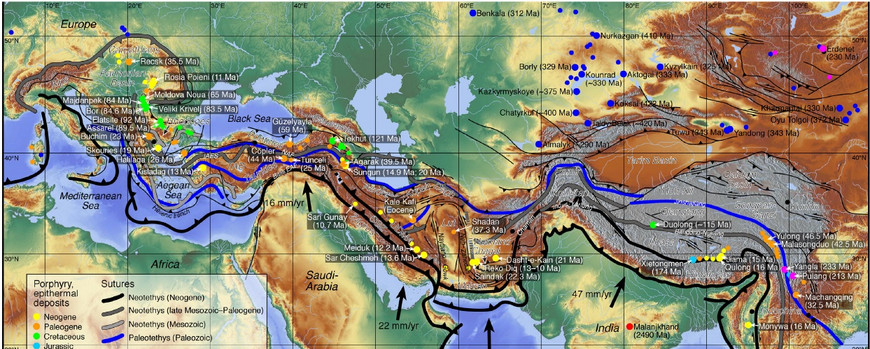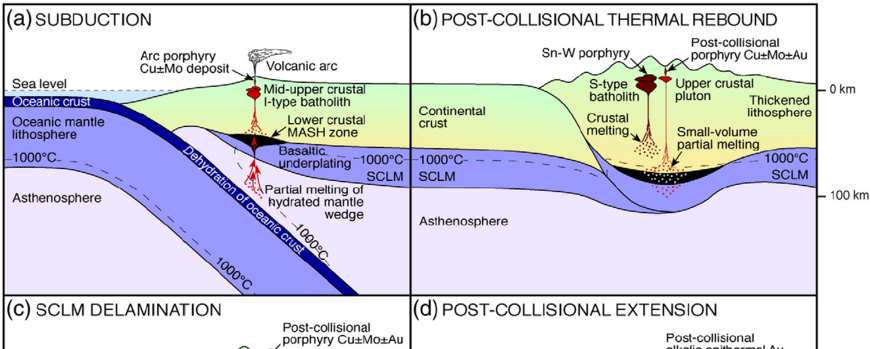Controls on the porphyry Cu-Au mineralizing potential of magmas in post-collisional settings
Porphyry copper deposits are mostly related to calc-alkaline andesitic to dacitic magmatism above subduction zones. In the past two decades, many porphyry copper deposits were also confirmed to have formed in post-subduction tectonic settings, but ore-forming magmas in such settings are potassium-rich and the porphyry ores are frequently gold-rich. Prevailing models speculate that the post-subduction, potassium-rich magmas could have been sourced from either lower-crustal, sulfide-rich cumulates or from metasomatized lithospheric mantle related to previous subduction-related magmatism, and that these magmas are probably enriched in gold and thus could explain the gold-rich nature of the porphyry ores. Our project aims to test these hypotheses via a combined approach of piston-cylinder experiments (both partial melting and crystallization experiments) as well as studies on natural samples with particular focus on magmatic sulfides and melt inclusions.


